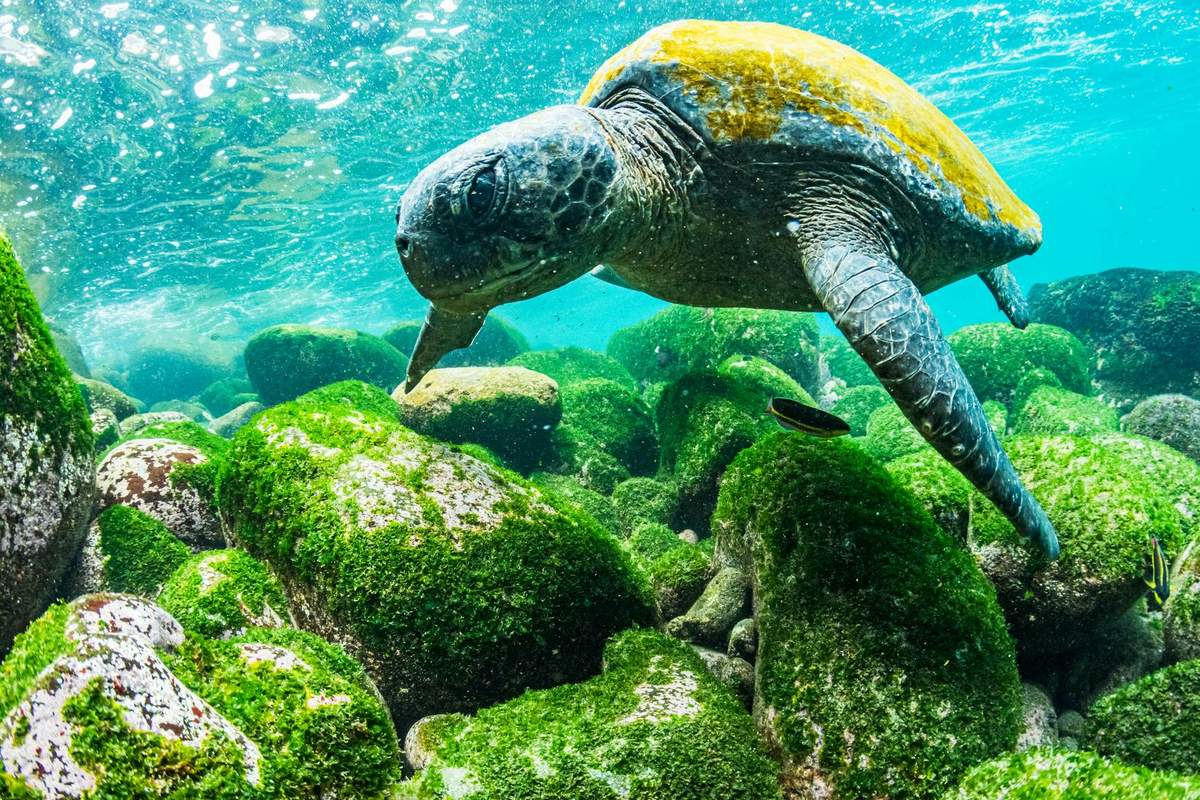

Ecuador's amazing cities and natural regions offer tons of adventures for traveling families © Vernonwiley / Getty Images
Mostly known as a travel destination for adventure-seeking enthusiasts, Ecuador is often overlooked as a family friendly destination. The country’s diversity and geographical distribution, however, make it the ideal place for families to experience the best of South America in one place.
With various outdoor ventures and enriching cultural experiences, Ecuador offers plenty of activities for travelers with kids. From exploring Unesco World Heritage sites to discovering endemic wildlife, here’s what to add to your bucket list when touring Ecuador with children.
Is Ecuador good for kids?
Although the country's family-oriented culture will make little ones feel welcome, traveling around Ecuador with kids will still pose certain challenges. Finding changing stations is not easy for families with babies, so pack accordingly.
Additionally, urban and rural infrastructures are not particularly stroller friendly. In certain areas of big cities, sidewalks are uneven, and getting around on public transportation is nearly impossible with a baby carriage. For practical purposes, take a page from the locals’ book and opt for baby carriers instead.
While nearly every place allows kids in, be aware that you won’t be given any special treatment in queues for having children with you — in fact, you’ll likely be queuing alongside locals with kids. You will, however, receive special rates to access attractions, museums and transportation. Some places will even offer free entry for children.
Despite minor infrastructure inconveniences, you will encounter Ecuadorians’ kid friendly attitude wherever you go. Locals adore children and will accommodate them readily at hotels, restaurants and attractions.

Where is best in Ecuador for kids
The allure of traveling to Ecuador is experiencing its four regions: the Highlands, the Pacific coast, the Amazonía and the Galapagos Islands. Options are endless for family trips, from trekking routes in the highlands to discovering local fauna in reserves scattered throughout the country.
In cities such as Quito and Cuenca, kids can explore churches and enjoy breathtaking views from domes. They can also indulge in traditional desserts and local food while exploring plazas and craft shops.
Meanwhile, the coastal region provides a chance to recharge while sunbathing on white-sand beaches. In Amazonic territories and the Galapagos Islands, they will come face-to-face with new landscapes.
Best things to do in Ecuador with babies and toddlers
Lounge in haciendas in the Andean highlands
Surrounded by mountains and volcanoes, historic haciendas in the highland region provide the perfect spot to rest, learn about Ecuadorian history and engage in leisure activities, from feeding farm animals to trekking.
Places such as Hacienda Pinsaqui are kid friendly and welcome pets, making this a real all-family experience.
Visit the cloud forest in Mindo
Hidden in a valley behind the Pichincha volcanoes (89km away from the Ecuadorian capital), Mindo is home to large varieties of birds, butterflies, amphibians and orchids.
Visiting the small village and its cloud forest is a must for families, as it offers the chance to discover uniquely Ecuadorian flora and fauna.
A highlight of this trip will be dropping by butterfly sanctuaries or joining birdwatching experiences that will acquaint even the littlest ones with nature.
Hit the beaches with the family
If you're on the Pacific coast or the Galapagos Islands, take a stroll down their marine paradises. Crossing the Spondylous Route is a no-brainer for a family trip in the coastal region. The route includes well-loved beaches such as Olón, Los Frailes, Playa Rosada and Puerto López. Meanwhile, Tortuga Bay in Galapagos is a mandatory stop for families to enjoy the white-sand beach and unique wildlife.

Best things to do in Ecuador with kids
Indulge in a chocolate-tasting experience
Fine cacao beans and emerging chocolate brands have prompted a chocolate renaissance in Ecuador in recent years. Visiting the world's largest producer of fine-flavored cacao without a taste would be a disservice, so wherever you are in the country, head out to chocolate boutiques.
In Quito, the award-winning República del Cacao offers chocolate in all forms (bars, ice cream, beverages, pastries, you name it) in kid friendly spaces. Meanwhile, in rural areas on the coast and the Amazonía, you can plan a trip to cacao farms to learn about the production process from local experts.
Stroll around historic centers in Quito and Cuenca
Both Quito and Cuenca’s historical centers are top attractions in Ecuador. Walking around these beautiful neighborhoods, taking in the architecture and art is a great way to spend the day with kids of all ages.
The experience gets only better if you can spare some time to look around craft shops, gold-capped churches and try local desserts such as espumilla (meringue cream), quesadillas and helado de paila.
Artisan, food and language workshops
Explore Ecuador’s multicultural identity by visiting (and participating in) crafts, food and language workshops. In Peguche (Otavalo), stop by Taller Ñanda Mañachi, a workshop owned by a family of Indigenous musicians who sell handmade musical instruments, performances, and even music classes for kids.
You can also drop by Taller Artesanal Peguche Wasi to witness traditional textile production and buy handmade souvenirs.
In Imbabura, haciendas like Zuleta and Pinsaquí provide hand embroidery lessons and cooking classes with local masters upon request. Families can also dive into the local language in Baños, where Raíces Spanish School crafts tailored Spanish-learning experiences through immersive tours and Andean music lessons.

Best things to do in Ecuador with teenagers and tweenagers
Support communitarian tourism
One of the most biodiverse countries in the world, Ecuador has plenty of nature reserves and community tourism havens scattered throughout its territory. Small villages and communes welcome travelers for trekking tours, animal sightseeing and other activities guided by locals.
There’s no shortage of natural wonders to discover, but if you’re in the Amazon region, visit the Cascadas Yanayaku or Parque Nacional Yasuní to satisfy your craving for some adventure.
Trekking and hiking
Topographic diversity and spectacular views make Ecuador a hub for outdoor activities such as trekking and hiking.
Take a day trip to some of the most popular – and safest – destinations by visiting the Quilotoa Loop, walking to Lake Cuicocha or climbing to relish viewpoints in Baños.
Local guidance and acclimatization are non-negotiable for more complex and physically demanding routes.
Enjoy festivals and visit museums
No visit is complete without experiencing Ecuador's colorful festivals and plunging into local culture and history. Depending on the time of the year, festivities such as La Diablada de Pillaro (January), Carnaval (February) and Año Viejo (December) will allow older kids to better understand Ecuadorian traditions. Similarly, visits to museums such as Casa del Alabado, Museo de Cera Alberto Mena Caamaño, La Capilla del Hombre and Museo de la Música Popular Guayaquileña will take them through different periods of Ecuadorian history.
Planning tips
Remember that arriving in the highland region can cause altitude sickness to some people. Travelers who come from lower altitudes can be particularly prone to experiencing headaches, upset stomach and dizziness. Be prepared to deal with these symptoms and don’t be afraid to ask for help from your tour guides or hotel hosts. Pro tip: stay hydrated and don’t over extenuate yourself.
Always carry a jacket, as moving from one region to another will come with temperature changes. Ecuador prides itself on its gentle weather, but chilly nights and random rain are never ruled out. If you visit the highlands, warmer clothes and several layers are a must.
















